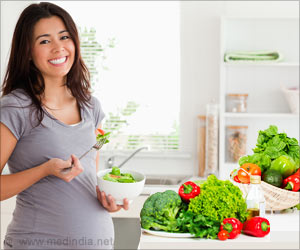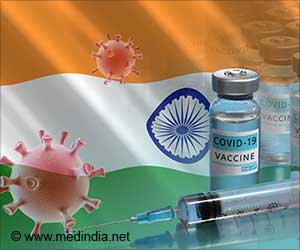.
“Conversely a diet with relatively higher intakes of solid fat, refined grains and cheese may increase the likelihood of a diagnosis of a serious condition, called preeclampsia,” said lead author of the study, Luis E. Maldonado, Ph.D., M.P.H., a postdoctoral scholar and research associate in the department of population and public health sciences at the Keck School of Medicine at the University of Southern California in Los Angeles.
Researchers sought possible links between what women typically ate in the third trimester of pregnancy (the last three months of pregnancy, months 7, 8, and 9) and the diagnosis of hypertensive disorders of pregnancy.
They analyzed data on 464 pregnant women (average age of 29 years) who were already participating in research through the Maternal and Developmental Risks from Environmental and Social Stressors (MADRES) Center, an ongoing, prospective pregnancy cohort of predominantly low-income, Hispanic/Latina women living in Los Angeles.
The study included women who had normal blood pressure before pregnancy and women who had been diagnosed with hypertension before pregnancy who may develop worsening high blood pressure conditions during pregnancy.
Using a web-based Automated Self-Administered 24-Hour Dietary Assessment Tool (ASA24), each woman verbally completed one or more dietary recalls during their third trimester of pregnancy that asked about foods and beverages consumed in the previous 24-hour period.
Scores were calculated for each woman using their responses regarding their food intake for two different dietary patterns.
Participants scoring in the upper quartile of a diet with relatively higher intakes of solid fats, refined grains, and cheese were classified as following the SRC dietary pattern.
Participants scoring in the upper quartile of a diet with relatively higher intakes of non-starchy vegetables, oils (fats naturally present in nuts, seeds, seafood; non-hydrogenated vegetable oils, etc.), and fruit were classified as following a VOF dietary pattern.
Hypertension was diagnosed from the women’s medical charts, noting either a physician’s diagnosis or a blood pressure reading (after 20 weeks of pregnancy) of 140 mm Hg or higher systolic (the top number) or 90 mm Hg or higher diastolic (the bottom number) on at least two consecutive prenatal visits.
The analysis found that 21.6% of the women developed at least one hypertensive disorder of pregnancy, with 6.7% developing gestational hypertension and 12.1% developing preeclampsia.
Women who reported consuming the most non-starchy vegetables, oils, and fruits (those who scored in the upper 25% on the VOF dietary pattern) had a lower likelihood of having developed preeclampsia (0.33) compared with women eating the least of the foods in the VOF dietary pattern.
The study has several limitations. The dietary data was self-reported and relied on participant memory. These results may not be generalizable to all populations since study participants were predominantly low-income and of Hispanic/Latina origin.
Therefore, future studies that capture diet earlier in pregnancy and before a hypertensive disorder of pregnancy diagnosis is made are needed to verify the findings.
Source: Medindia



